Electric heating radiators: the main types, advantages and disadvantages of batteries
Stationary batteries do not always provide a comfortable temperature. In particularly cold winters, additional heat sources must be used. A good option is electric heating radiators, which by and large, include only oil batteries.
In practice, this group includes all electric heating appliances equipped with fins - this design disperses heat in the best way. In the article we presented, all types of heating electrical equipment are analyzed in detail. Reliable information will help determine the best option for you.
The content of the article:
Electricity Benefits
There are several arguments in favor of electric batteries. They are easy to install and operate. Installing a mobile electric battery consists in simply plugging it into a power outlet and setting modes. When mounting a radiator on a wall, a bracket is sufficient.
Such a device can always be relocated to another place. To connect an electric battery, you do not need to order a project and get permission. This applies to all types of these devices, except for floor.
Electric radiators are safe and environmentally friendly. Since their housing is sealed, no harmful substances enter the surrounding atmosphere. The batteries powered by the outlet look aesthetically pleasing and will not spoil any interior.
The thermostat present in the design of the electric battery allows you to set the optimum temperature. By setting a certain temperature with a thermostat, they overheat the heating unit.
Some experts believe that manufacturers expose electric oil batteries as innovative, super-efficient heaters.
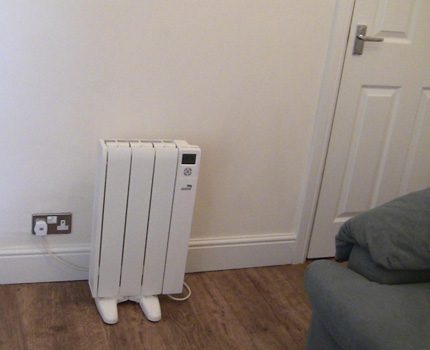
In fact, this is a conventional radiator with an oil coolant, characterized by the presence of an aluminum case and a digital indicator. In their opinion, this is simply an advertising move with the aim of inflating their value completely unjustifiably.
Types and types of electric radiators
The range of electric radiators, as well as their functionality, is very diverse. This group includes all radiators equipped with fins, as this design disperses heat well.
All existing electric radiators can be divided into two large groups: liquid appliances and non-liquid.
Electric radiators are distinguished by their location and size:
- wall mounted;
- Ceiling
- outdoor.
As a variety, there are plinth, floor, glass, ceramic appliances.
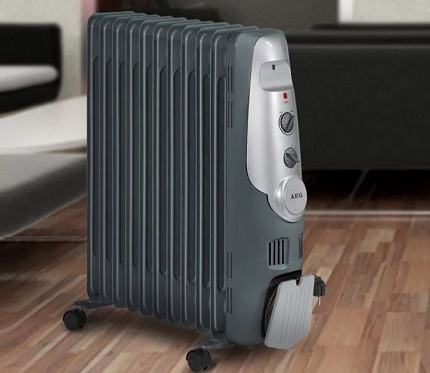
Based on the design, the electric batteries are classified as follows:
- oil;
- fan heaters;
- infrared heaters.
According to the type of radiated heat, electric heaters are divided into two groups. The first includes convectors - devices that provide heat supply due to the movement of heated air masses.
The second group includes systems that transmit infrared radiation of a safe spectrum to objects located in the zone of operation of the device, after which heated objects propagate it in the environment.
There are 2 versions of these heating devices: stationary and portable.
Fluid Electric Batteries
Batteries of this type are easy to execute with a small set of components. Heating occurs by tubular electric heater (TENA) low power - 300 - 500 watts.
There are also more powerful elements.The heating elements are placed in an aqueous or oily environment, in some cases in a non-freezing liquid.
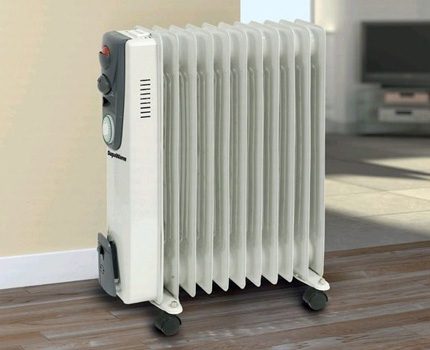
There are two models of liquid electric batteries on the market: hermetically sealed and open. In the latter case, coolant is added to the device if necessary.
The heater heats the coolant to a certain temperature, which transfers the temperature to the metal casing, which radiates the received heat into the space of the room. The larger the heat transfer surface, the better the air warms up in the room.
As a rule, electric batteries are aluminum. This material is most suitable for the manufacture of heating appliances, as it is lightweight and endowed with the necessary properties to tolerate high temperature.
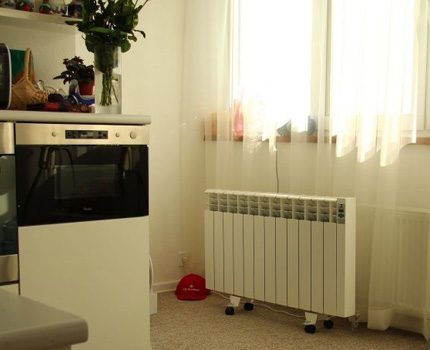
If non-freezing liquid is the heat carrier in liquid electric batteries, they are well suited for rooms heated only periodically. Electric batteries, where mineral oil is used as a heat carrier, consume more electricity than radiators using distilled water.
This is explained by the fact that the oil has a higher density, therefore, it warms up with high energy costs, but to a higher temperature. Criteria choosing an oil heater detailed in this article, which we recommend reading.
Structurally, the electric battery consists of sections, an upper and lower collector. TEN is placed in the lower collector. The design does not provide for the presence of open heating elements, so neither oxygen nor dust particles are burned in the air.
Radiators work silently, but since the surface warms up to high temperature, you must make sure that it does not come into contact with easily combustible objects.
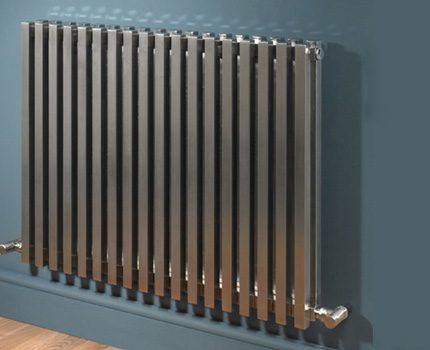
The best liquid electric batteries, according to users, include:
- Delonghi GS 770715 - battery of 7 sections, designed for 15 m², with a thermostat, fan, with protection against both overheating and freezing;
- Mystery MH-7001 - a radiator with three degrees of adjustment;
- Rolsen ROH-D9 - nine-section battery, equipped with a portable dryer for linen;
- Electrolux EOH / M-1157 - designed for rooms up to 15 m².
In general, electric batteries used for heating are economical appliances.When turned on, they use maximum power, but heating the coolant to the required temperature, the thermostat turns off the heating element. These batteries are easy to install and manage.
Liquid-Free Electric Batteries
Dry or non-liquid electric batteries, in comparison with liquid counterparts, have a lower mass and heat up faster.
There is no intermediate heat carrier, therefore, heat transfer occurs to the heat transfer surface from the heating element directly. Such radiators work on the principle of convection, hence their more common name - electric convectors.
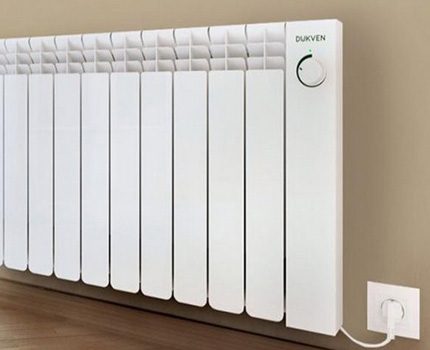
The air heated by the heating element, rushing up, displaces the air mass with a lower temperature. That, in turn, passes through the convector body and repeats the movement according to the previous scheme.
At the same time, the surface of the convector heats up, but the body temperature is not very high. Use non-fluid electric heaters only autonomously. The most popular models of non-liquid electric batteries include SIRA Onice 1600. The radiator has 8 sections, 1.6 kW thermal power, and an integrated temperature controller.
Convectors produce both wall and floor. A special group is skirting electric batteries. While the installation of the first two modifications can be performed without the involvement of specialists, the installation of the third type of electric batteries requires special knowledge and experience. Typically, the installation of such convectors is planned at the construction stage.
Floor electric convectors
Since radiators of this type are located in a recess in the floor, they belong to a hidden type of heating systems, therefore, without taking up extra space, they quietly heat the room.
Their heating occurs by creating a hot-air curtain on the path of penetration of cold air through the most vulnerable places in the room. An in-floor electric radiator operates on the principle of convective heating.
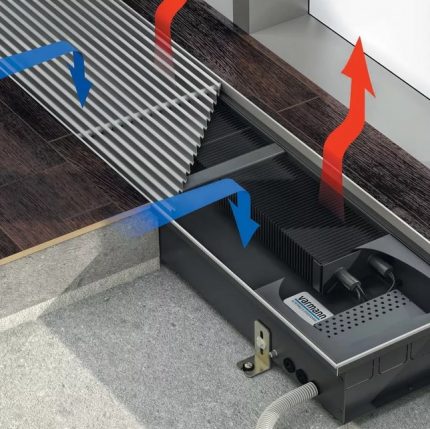
A heater is inserted into the battery itself, plates of metal with good heat conductivity - aluminum, copper, thin steel are mounted on it. Sometimes metal is replaced by ceramics. This solution allows you to expand the heat transfer surface.
The case-box, at the bottom of which a heater with plate plumage is placed, resembles the letter U in its shape. In order to prevent heat from entering the floor and to the sides, the case is insulated.
To adjust the thermal regime, a temperature sensor equipped with a microprocessor is built into the box. If forced ventilation draft is not provided for the underfloor radiator, the height of the case in which the battery is enclosed must not be less than 200 mm.
The structure is closed with a strong decorative lattice made of metal, not exceeding the floor level and capable of supporting the weight of a person.
The throughput of this building envelope is determined by the ratio of its total area to the total size of the slots. A sufficient volume of cold air masses and heat fluxes should pass through the grate.
More powerful electric radiators are equipped with additional fans to enhance convection properties. The height of the case in this case does not play a role.
To reduce the noise from the working fan, it is mounted on vibration mounts with inserts made of porous rubber. The presence of a fan ensures faster heating of the room and reduced electricity consumption.
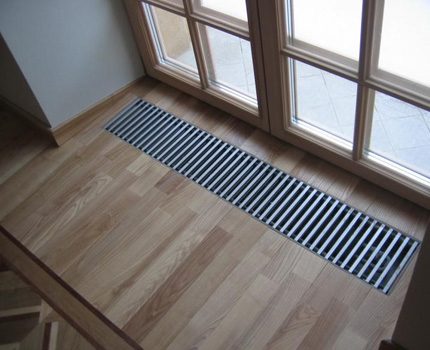
Electric batteries built into the floor have a number of positive qualities. The place for their installation can be determined in any part of the room, they practically do not take up space, and thanks to a large assortment of grilles, they successfully fit into any interior.
There are linear and roll gratings. Crossbars in linear gratings are both transverse and longitudinal, and in roll gratings only transverse.
The disadvantage of these heating devices is the complexity of the installation and the cost, which is much higher than that of wall-mounted batteries. In rooms with a high ceiling - more than 3 m, they are not very effective, in addition, they contribute to the dispersion of dust throughout the room.
A variety of electrical systems for heating at floor level is the heating baseboard:
Characteristics of infrared radiators
Infrared electric heaters are fundamentally different from other types of similar devices. Their task is to warm objects in their area of effect.
This is realized through electromagnetic waves. Their radiation does not heat the air in the room, and the device itself remains cold. Warm surroundings give off heat to the environment.
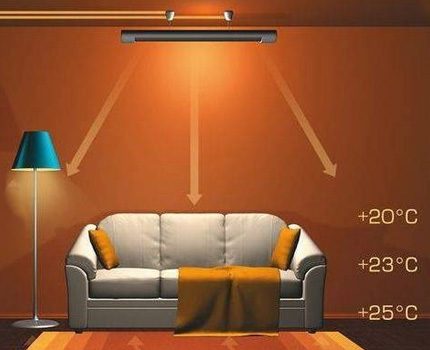
Based on the type of heating element, infrared radiators there are: TEN, ceramic, carbon. The heater of the first type consists of a metal housing, an insulator, an anodized plate, foil and a heater. The optimum thickness of the anodized layer is 0.025 mm, and the foil is 0.012 mm.
Depending on the model, the power of the device varies between 0.8 - 3 kW. Adjust it manually or with a thermostat.
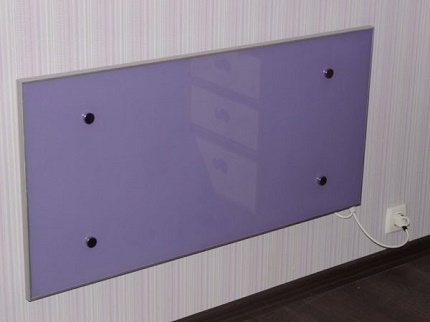
Ceramic heaters are available in three versions. They are wall, floor and table. The first differ in considerable dimensions and visually similar to an air conditioner.
Floor models are the most popular. For security reasons, they are equipped with special sensors that turn off the device in case of overturning or overheating.
Desktop appliances are often used outdoors. During operation, they rotate and warm up efficiently, including objects and people falling into the reach zone of infrared radiation.
The heating element in a carbon infrared heating device is carbon fiber enclosed in a vacuum quartz shell. Manufacturers claim that this fiber practically does not fail and it can be used indefinitely. Only a quartz tube can fail, breaking when dropped.
The most popular models of infrared heaters are:
- Polaris PMH 2095 - a powerful, practical device with a stylish design;
- Electrolux EIH / AG2-2000E - floor standing appliance that effectively maintains room temperature of up to 25 m²;
- Timberk TCH A5 1000 - ceiling model, characterized by compact dimensions and easy settings;
- Hyundai H-HC1-18-UI572 - a device for installation on a wall or ceiling with many useful functions;
- NeoClima NC-CH-3000 is a compact, mechanically controlled heater.
Since infrared emitters are inertialess, you can feel comfortable in the room 15 minutes after connecting the device.
They do not emit any combustion products during operation, and there is no need to specifically arrange ventilation for them. But if the ventilation system in the house is present, then they do not have any effect on its operation.
Rules for choosing an electric battery
The right choice of batteries with electrical power provides for accounting for the thermal power of the device. If you plan to use the heater as an additional heater, not more than 80 watts will be required to heat 1 m² of the area of a room 2.6 m high.
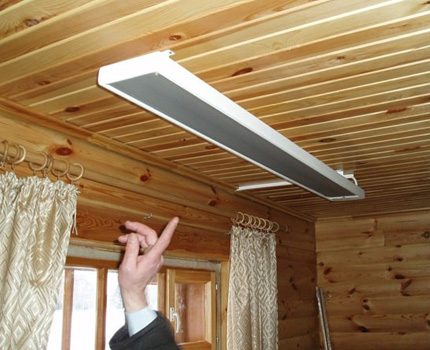
To heat a room of a specific area, a certain number of sections will be required. The rated power of one is 0.13 kW. Based on this parameter and the area of the room, it is easy to calculate the optimal number of sections.

If convective electric battery is the only type of heating, then a room of 10 m² with a ceiling of 2.6 m² in height will be heated to a comfortable temperature by a 1 kW heater. When the ceiling is above the specified value, the result should be increased one and a half times.
This calculation is averaged, in order to obtain more accurate data, it is necessary to take into account:
- the material from which the building envelopes were erected;
- the presence of a ventilation system and its type;
- type of device and its functionality;
- network settings;
- temperature range requirements.
When choosing an electric battery from a certain price category, you should know that the type of thermostat influences the price of a battery to a large extent. A mechanical thermostat is half the price of an electronic thermostat, but such savings are relative - the presence of an electronic thermostat saves about 4% of electricity.
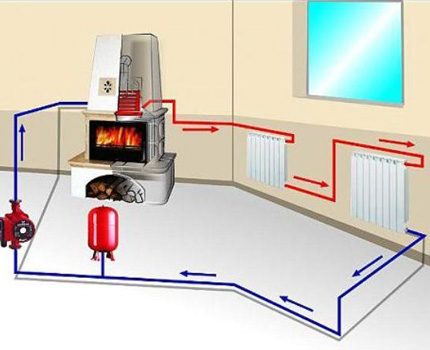
The choice determines the location of the intended battery installation. The dimensions of the device and properties depend on it. If a special niche is provided for it, the battery should freely enter this space.
The same condition must be observed in the case of placing the radiator under the window opening. To install in the bathroom, you need a radiator that has moisture protection. In order for the electric battery to work reliably, a choice should be made among models of well-known brands. When installing, be sure to comply with the requirements set forth in the instructions.
For safety reasons, a gap of at least 0.5 cm is required between the battery in a permanent place and the wall, and the wire leading to the outlet must not come in contact with a heated surface.
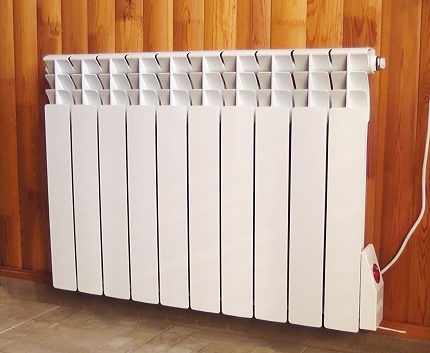
The installation of devices for the input of which a plug is provided does not require any preparatory measures.
This problem is more difficult to solve when, in order to connect several batteries and connect them into one system, an additional cable must be connected.
A prerequisite is the inclusion of a protective switch at least 30 A in the circuit, and the main core of the cable must have a cross section corresponding to the total capacity of all batteries. Such a heating system can be controlled using the remote control.
Conclusions and useful video on the topic
The video will familiarize you with the principle of the electric radiator:
Every year the range of electric radiators is updated. Not only their technical characteristics, but also the design are changing for the better.
In order to make the best choice, you need to analyze the available information and on the basis of this decide which technical indicators are suitable for your particular case.
Please write comments in the form below the text of the article. Tell us about how you chose an electric radiator for use in the country, in the office or apartment. Share useful information, ask questions, post pictures on the topic.

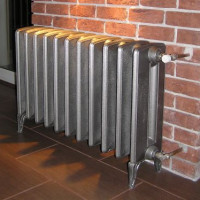 Cast-iron radiators: characteristics of batteries, their advantages and disadvantages
Cast-iron radiators: characteristics of batteries, their advantages and disadvantages  Vertical heating radiators: types + advantages and disadvantages + brand overview
Vertical heating radiators: types + advantages and disadvantages + brand overview 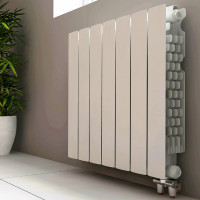 Steel heating radiators: varieties, characteristics and advantages of batteries
Steel heating radiators: varieties, characteristics and advantages of batteries  What paint to paint heating radiators: a comparative overview of the types of paint for batteries + the best manufacturers
What paint to paint heating radiators: a comparative overview of the types of paint for batteries + the best manufacturers 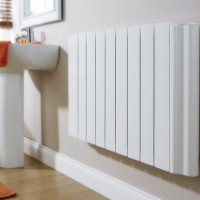 Vacuum heating radiators: overview of types, selection rules + installation technology
Vacuum heating radiators: overview of types, selection rules + installation technology  How much does it cost to connect gas to a private house: the price of organizing gas supply
How much does it cost to connect gas to a private house: the price of organizing gas supply  The best washing machines with dryer: model rating and customer tips
The best washing machines with dryer: model rating and customer tips  What is the color temperature of light and the nuances of choosing the temperature of the lamps to suit your needs
What is the color temperature of light and the nuances of choosing the temperature of the lamps to suit your needs  Replacement of a geyser in an apartment: replacement paperwork + basic norms and requirements
Replacement of a geyser in an apartment: replacement paperwork + basic norms and requirements
In our office, in an especially cold winter, they delivered such electric batteries for additional heating. I don’t know, maybe they were just cheap, but there was absolutely no sense in them. It was possible to warm up only by putting this battery next to you, but the room did not get warmer. Ordinary heaters are better, they let out at least directionally warm air.
I have three floor oil radiators at home, we have been using them for seven years by the whole family, waiting for the start of the heating season. They suit me with almost everything except two points. The first is that after connecting to the network for about half an hour, an unpleasant and fairly strong smell comes from them. And secondly, there is a large consumption of electricity. But we must pay tribute to them, they warm up the room quickly and are convenient to use.
There is only one drawback for all of these heaters - when they are turned on, the counter starts spinning like crazy. Constantly in the winter they turned on the oil heater in the nursery as it was cold. Then at one fine moment he insulated the windows and the need for it disappeared. Utility bill fell by 2000 p.
Is it true that if the oil heater falls, it is already unfit for use?
Hello. If the heater has been working for a long time in this position, there is a risk of burnout of the spiral, however in most cases, models are equipped with rollover protection. The fact that in the event of a rollover, the device is unsuitable for use is a myth if it does not have significant mechanical damage, leaks and other defects.